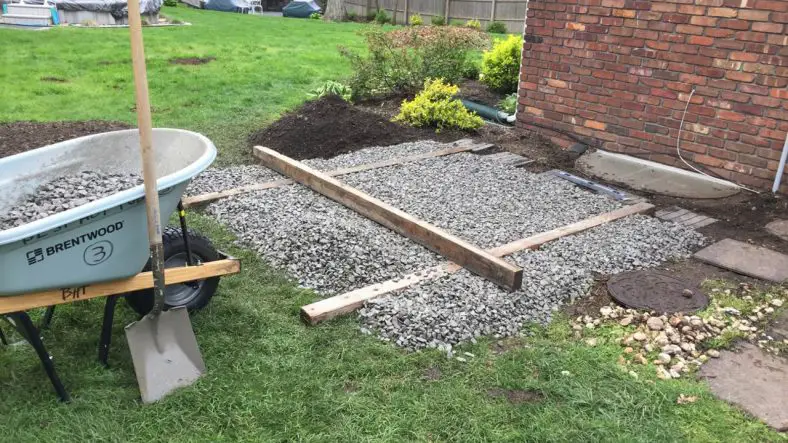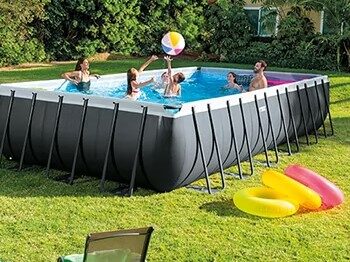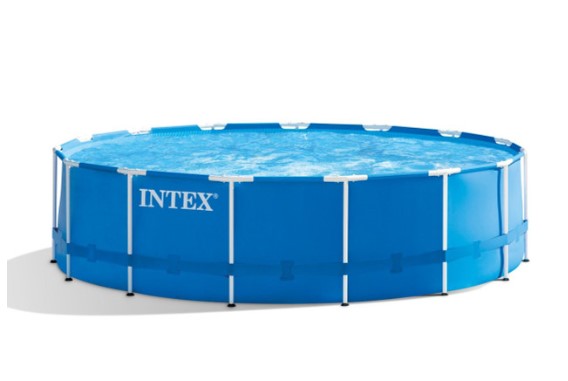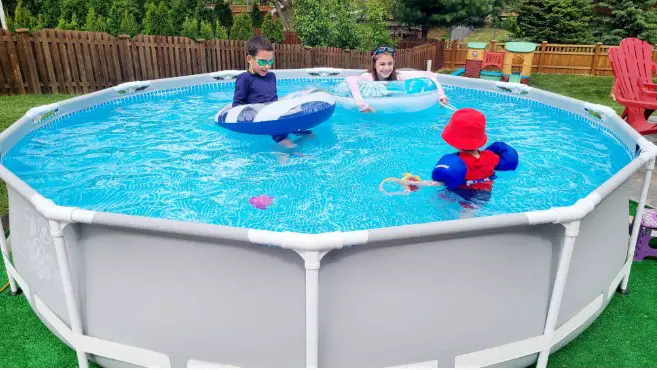Table of Contents
Buying a new hot tub can be a very exhilarating experience, especially if you haven’t bought one before.
You can relax in luxury, the warm bubbles soothing your aching muscles after a hard day in a cramped office.
Hot tubs give you a taste of the high life in the comfort of your own back garden.
But buying one of these outdoor bathing units can be filled with all sorts of stresses that many buyers don’t foresee, one of the primary ones being selecting the best base to use for your hot tub.
There are many different types of material you can use for your new hot tub, and which one you buy will all depend on what you’re looking for in your hot tub set up.
Do you want something that complements the style of your garden?
Do you want a durable material that can support a larger capacity hot tub?
Do you want adequate drainage for your hot tub?
Chances are that you’ll be wanting all three.
But don’t worry, we’ve got a handy breakdown of the best hot tub base materials currently available on the market, as well as what unique features each one provides, and a few essentials that you’ll need no matter what base you end up choosing.
The Best Materials for a Hot Tub Base
When it comes to hot tub bases, there are a few materials that you will see cropping up time and time again.
The unfilled body of most hot tubs will traditionally weigh no more than 800 lbs, however, once they have been filled up with water and people, you can be looking at up to 2 tonnes of weight spread over a concentrated few square feet of space.
Finding a supportive material for your hot tub is extremely important to avoid cracking and sagging in the long run.
Concrete Pads
Concrete is one of the most resilient substances known to man and is the go-to choice for hot tub bases.
You can knock together a basic concrete hot tub pad with very minimal labor for a reasonably inexpensive amount of money.
Simply pick up 4 large slabs of concrete from your nearest DIY or hardware store. You’ll want them to be at least 6-inches thick and supported with rebar.
Lay the squares on your grass or tarmac back garden, making sure there is around half an inch gap between each one to allow the water from your hot tub to drain through easily.
Once the slabs are laid, make sure they are level using a spirit gauge.
You want to avoid your hot tub bowing or sagging after use, so you’ll need to make sure that the soil underneath is compact.
Once the slabs are arranged and level, then you can begin installing your hot tub.
The concrete will provide the underneath of the hot tub with good gripping, which will also avoid the hot tub shifting.
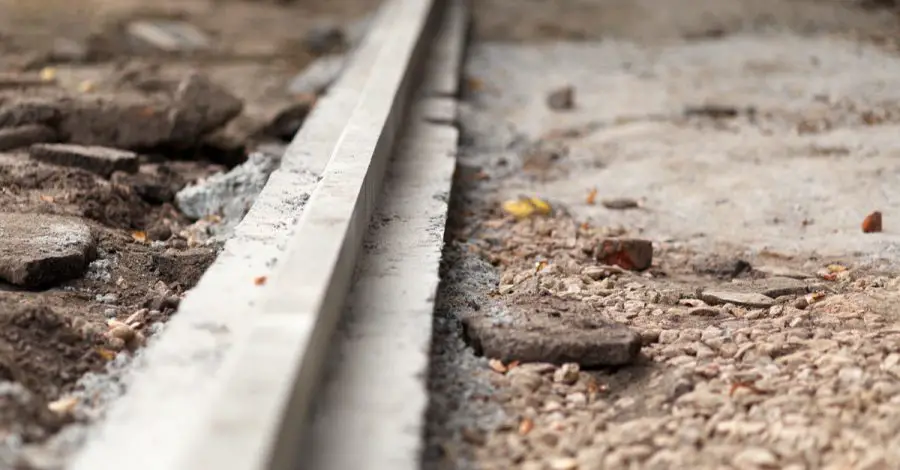
Patios And Decking
Another very common choice amongst hot tub users, it’s the wood decking.
Decking by itself will not support the weight of a large hot tub, which is why you will need to reinforce the underneath.
If you are unsure about what material is best for reinforcement, you should call out an engineer, who will be able to bolster your decking with industry-standard reinforced decking material or just concrete.
The main allure of grooved decking is its drainage properties as well as the aesthetic benefits.
A wooden decking gives your hot tub area that Swiss-style sauna vibe, also absorbing the heat from the sun and transferring it through your bare feet, which will feel extra comfortable on those summer days.
Gravel Bases
Another very solid and cosmetically pleasing choice when it comes to hot tub decking – gravel.
Contrary to popular belief, a gravel base is actually extremely supportive for a hot tub, as it practically molds to the shape of the base.
Here are a few simple steps for manufacturing your own gravel pit for a hot tub:
- Measure the base of your hot tub to attain the correct dimensions.
- Find the spot in your garden where you would like the hot tub. Mark the corners with chalk if you’re building on concrete or spray paint in you’re building on grass.
- Dig a 6-inch well in which you can slot your hot tub. Make sure to leave an inch or so of room outside the border for draining.
- Fill the pit with gravel. You can either fill it with regular gravel or a composite of 4-inches regular gravel and a further 2-inches of pea gravel, which your give your hot tub that added pristine gloss on the top layer.
Hot Tub Pads
A hot tub pad is one of the easiest methods of laying down a solid hot tub foundation.
All you have to do is dig out a level surface of ground and make sure that the soil is compacted sufficiently to support the load of the hot tub and its constituents.
The hot tub pads should then be interlocked and placed into the ground, filling in the gaps with regular or pea gravel, creating a solid, level surface.
This is an easy and affordable solution for your hot tub base, as some of these pads can support up to 420 tonnes of weight per square meter.
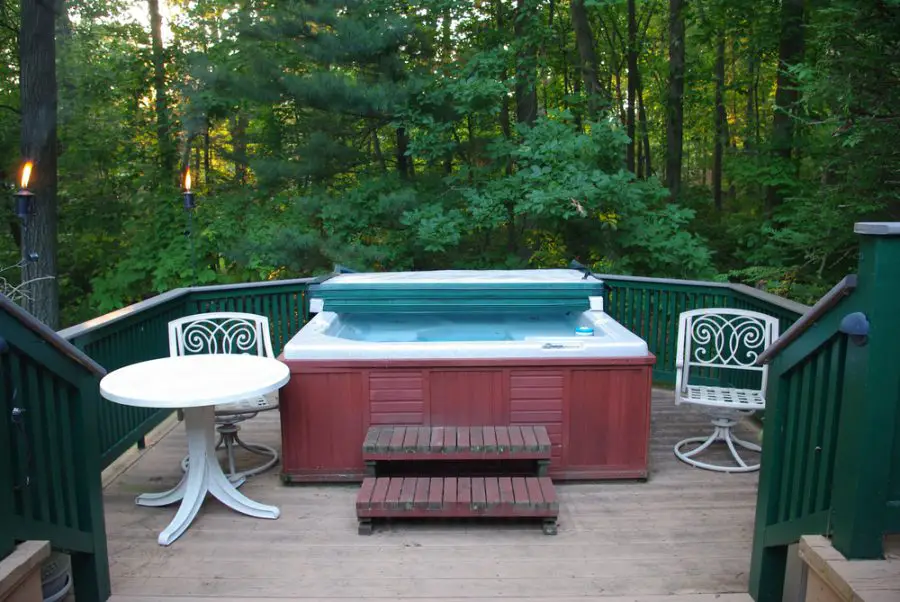
What Do You Need To Think About When It Comes To Hot Tub Pads?
Drainage
Your hot tub will not need to be connected to your plumbing, you can simply fill them with water from your garden hose.
However, once the hot tub has been used, you will want to drain it to avoid build-up of gunk, leaves and also remove any potential drowning hazards for local pets and small children.
Having enough space underneath your hot hub for drainage is very important.
Grass and soil are very absorbent materials, although repeated draining into these mediums could lead to sagging further down the line.
Gravel and concrete promote excellent drainage, allowing the water to sluice discreetly through the gaps.

